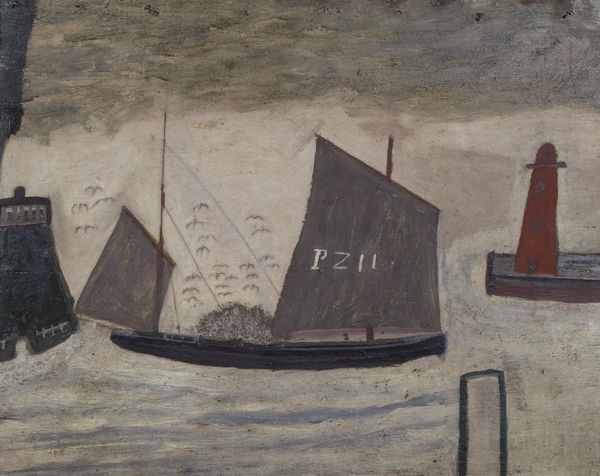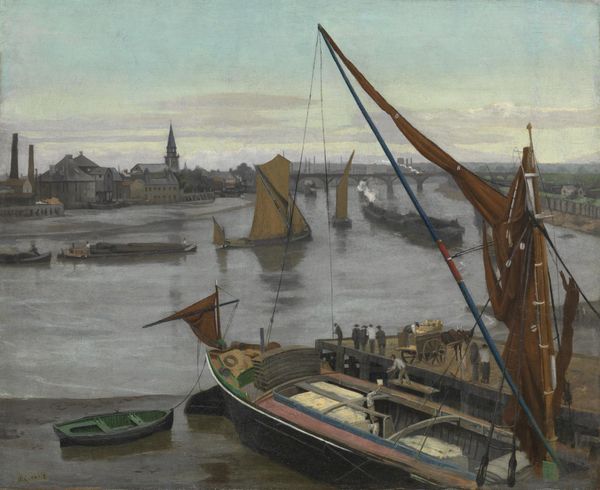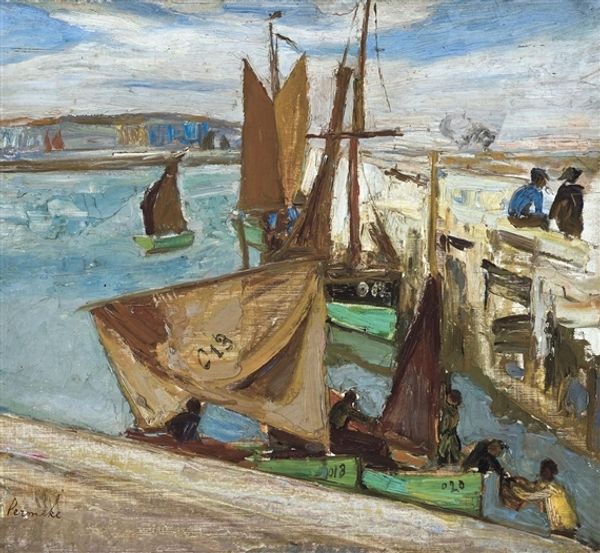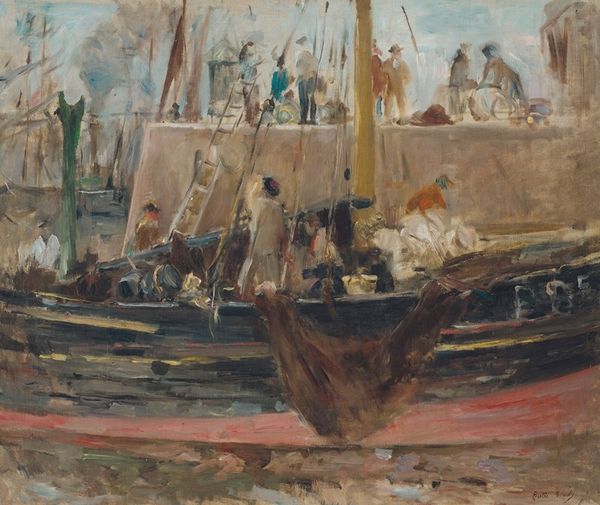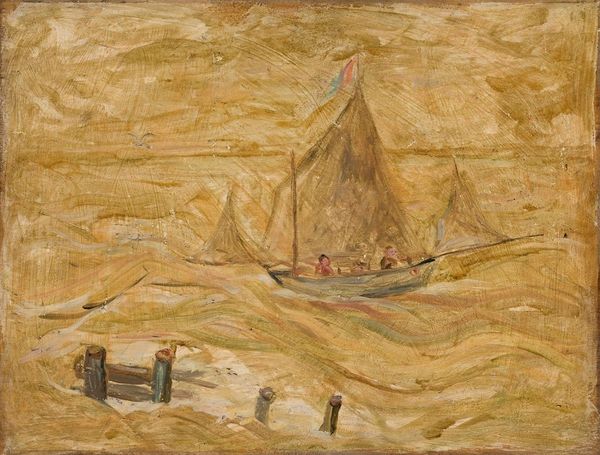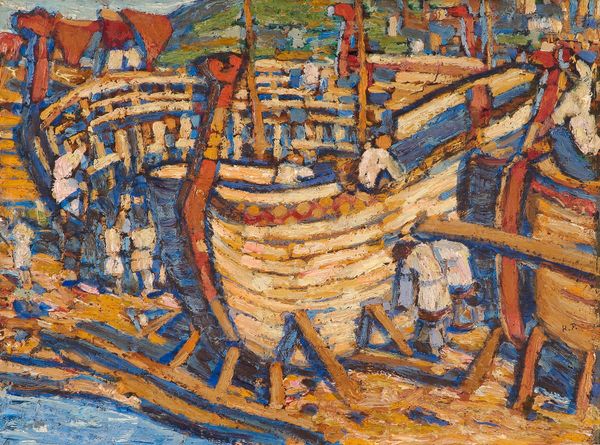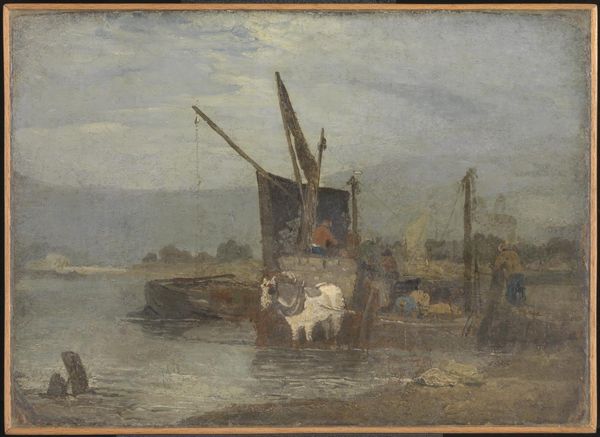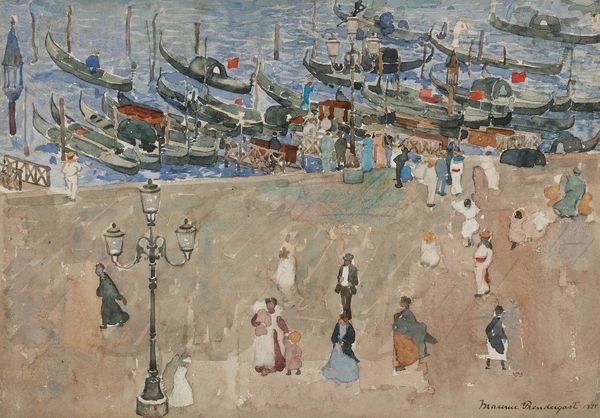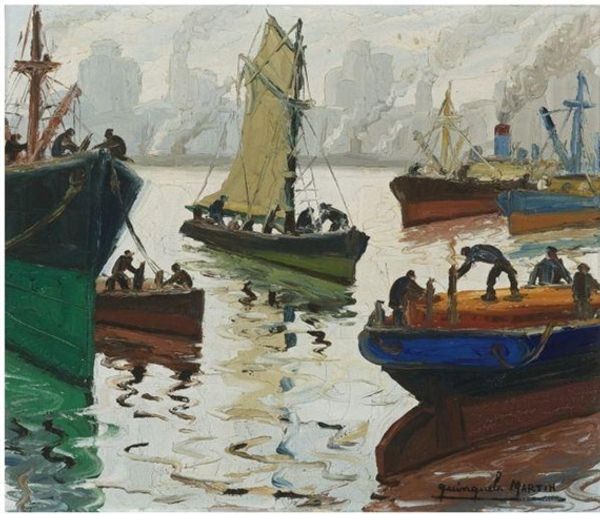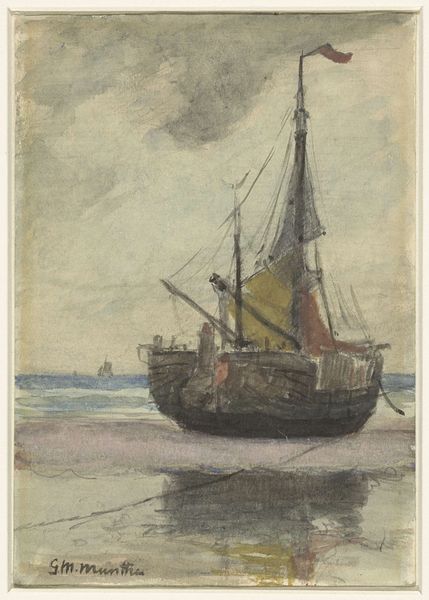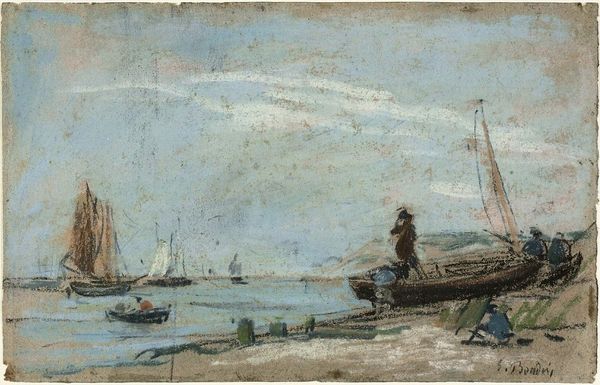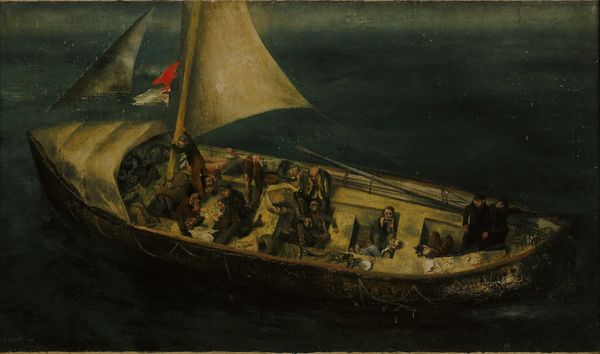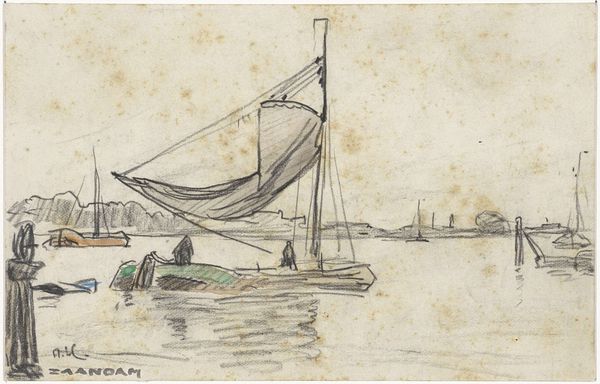
Dimensions: support: 794 x 1086 mm frame: 917 x 1215 x 91 mm
Copyright: CC-BY-NC-ND 4.0 DEED, Photo: Tate
Curator: Christopher Wood's "Boat in Harbour, Brittany" presents an interesting study in early 20th-century production and depiction of coastal life. Editor: The painting evokes a sense of quiet industry, but also exclusion. Observe the two solitary figures on the dock; their role seems almost spectral against the activity on the boat. Curator: I'm struck by Wood’s technique; the textured brushstrokes and flattened perspective offer a very modern approach. The artist seems less interested in capturing precise detail and more invested in the materiality of paint itself. Editor: Precisely. And this particular region of Brittany held strong social and political undercurrents during this time. Who had access to the sea, to resources? The painting speaks, perhaps inadvertently, to these hierarchies. Curator: Considering Wood's artistic trajectory, the simplicity and almost naïve style, perhaps, becomes a conscious decision. A statement. Editor: Absolutely, a statement deeply entangled with its era and the unseen narratives swirling within it. It’s a powerful reminder that art exists within a complex web of social forces.
Comments
tate 6 months ago
⋮
http://www.tate.org.uk/art/artworks/wood-boat-in-harbour-brittany-t00489
Join the conversation
Join millions of artists and users on Artera today and experience the ultimate creative platform.
tate 6 months ago
⋮
Though in Brittany, this scene is similar to many works painted by Wood in Cornwall. Towards the end of his short life, Wood spent periods working in both places in pursuit of a ‘naïve’ style of painting. In 1928 he visited Cornwall with his friends Ben and Winifred Nicholson. In St Ives the two men came across Alfred Wallis, whose ‘primitive’, child-like paintings made a deep impression on their subsequent work. For them, adopting Wallis’s instinctive style allowed them to reject the artificiality of established painting for a more authentic mode of expression. Gallery label, July 2007
